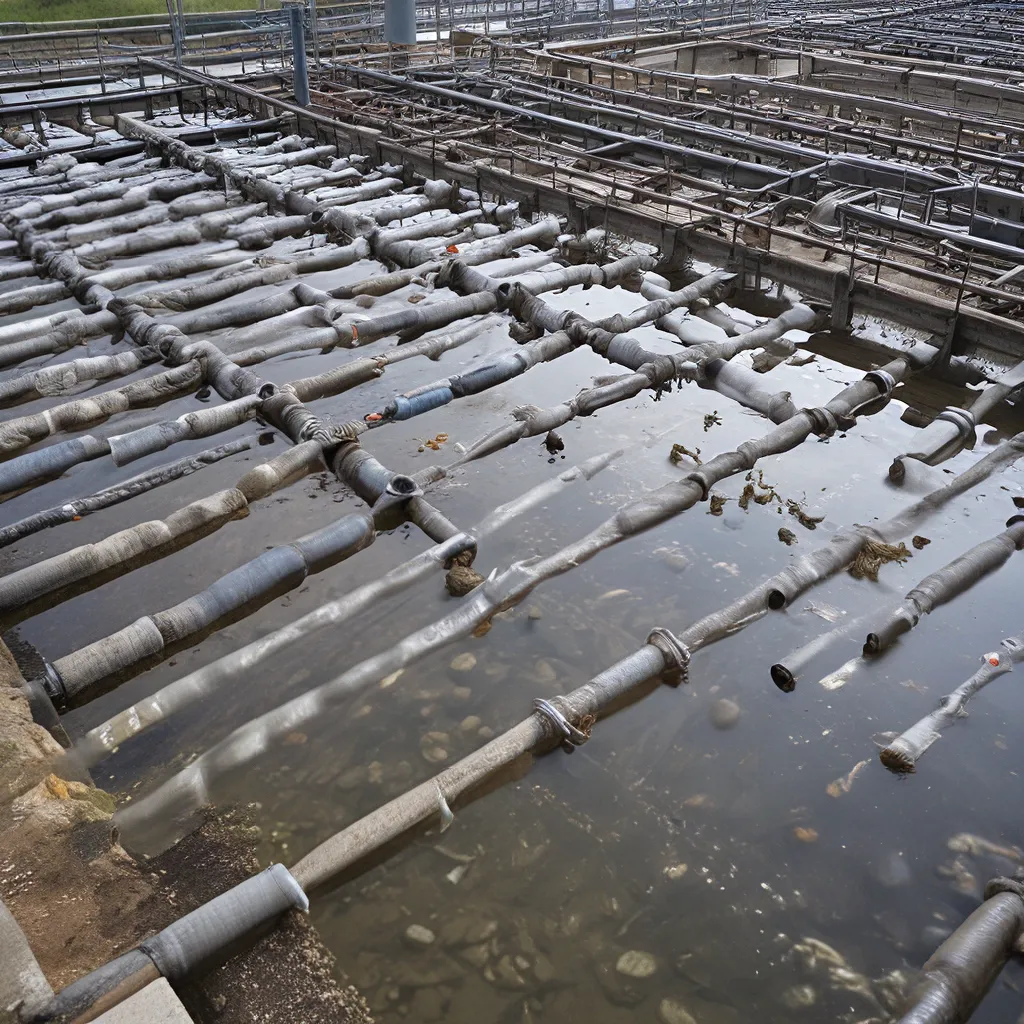
As an environmental enthusiast, I’ve always been fascinated by the vital role of wastewater treatment in safeguarding our precious water resources. But recently, I’ve become increasingly concerned about a growing challenge that’s caught the attention of experts and regulators alike – the presence of emerging contaminants, particularly micropollutants and pharmaceuticals, in our wastewater systems.
It all started when I stumbled upon a report from the U.S. Environmental Protection Agency (EPA) that shed light on this pressing issue. The EPA is actively investigating the potential impacts of these “contaminants of emerging concern” (CECs) on aquatic life, and it’s clear that the traditional methods of wastewater treatment may not be fully equipped to handle these elusive and often complex compounds.
Unraveling the Mystery of Micropollutants
So, what exactly are these mysterious micropollutants, and why are they causing such a stir in the world of wastewater treatment? Well, it turns out that they are a diverse and rapidly growing group of chemicals that include pharmaceuticals, personal care products, and a host of synthetic compounds. These substances, although present in trace amounts, are increasingly being detected in our surface waters, and there’s growing concern about their potential to disrupt the delicate balance of aquatic ecosystems.
The EPA report highlighted a particularly troubling aspect of these micropollutants – their ability to act as endocrine disruptors. These are compounds that can alter the normal functioning of hormones, leading to a variety of health effects in aquatic organisms, such as reproductive issues. What’s even more concerning is that the traditional toxicity testing methods may not be sufficient to fully capture the nuanced and long-term impacts of these chemicals on aquatic life.
Navigating the Complexities of Pharmaceutical Contaminants
But it’s not just the micropollutants that are keeping wastewater treatment professionals up at night. The presence of pharmaceuticals in our wastewater is another growing concern. These are the very medications we rely on to maintain our health, but they can have unintended consequences when they find their way into our waterways.
The EPA report highlighted the unique challenges posed by pharmaceutical contaminants, noting that they may exhibit low acute toxicity but can still cause significant reproductive effects at very low exposure levels. This means that the traditional endpoints used in toxicity testing may not be comprehensive enough to fully assess the potential impacts of these compounds on aquatic organisms.
Adding to the complexity, the report also mentioned that the effects of exposure to these pharmaceuticals during the early stages of life may not be observed until adulthood. This underscores the importance of studying the long-term, multigenerational effects of these contaminants, a task that requires innovative testing methodologies and a deep understanding of their specific modes of action.
Evolving Approaches to Wastewater Treatment
As I delved deeper into this issue, it became clear that the conventional wastewater treatment processes may not be sufficient to effectively remove these emerging contaminants. The EPA has recognized this challenge and has been working on developing new guidelines and approaches to help water treatment professionals navigate this complex landscape.
The agency has released a White Paper that outlines the technical issues and recommendations for modifying the 1985 guidelines for deriving numerical national water quality criteria. These modifications, according to the EPA, should enable the agency to better address CECs and develop ambient water quality criteria for the protection of aquatic life, making the best use of the available scientific evidence.
The Role of Innovation and Collaboration
But the journey to addressing this challenge doesn’t end there. Experts believe that innovative treatment technologies and collaborative research efforts will be crucial in tackling the problem of emerging contaminants in wastewater.
For example, the European Investment Bank has highlighted the potential of advanced oxidation processes, membrane filtration, and adsorption technologies in removing micropollutants from wastewater. And the Washington State Department of Ecology has emphasized the importance of collaboration between researchers, regulators, and water utilities to stay ahead of this evolving challenge.
As an environmental enthusiast, I can’t help but be inspired by the efforts of organizations like the EPA, the European Investment Bank, and the Washington State Department of Ecology. They’re not just passively observing the problem – they’re actively working to develop solutions and equip water treatment professionals with the tools and knowledge they need to protect our precious water resources.
And you know what? I’m convinced that with the right combination of technological innovation, scientific research, and collaborative problem-solving, we can rise to the challenge of addressing emerging contaminants in wastewater. It’s a complex issue, to be sure, but one that’s too important to ignore. That’s why I’m so excited to see what the future holds for the world of wastewater treatment.
In fact, I’m so passionate about this topic that I recently discovered Alpha Wastewater, a company that’s at the forefront of cutting-edge wastewater treatment solutions. Their team of experts is dedicated to developing innovative technologies and strategies to tackle even the most stubborn contaminants, and I’m eager to see what they come up with next.
So, if you’re as intrigued by this topic as I am, I encourage you to keep your eyes peeled for the latest developments in the world of wastewater treatment. Who knows, you might just stumble upon the next big breakthrough that could help us safeguard our water for generations to come.